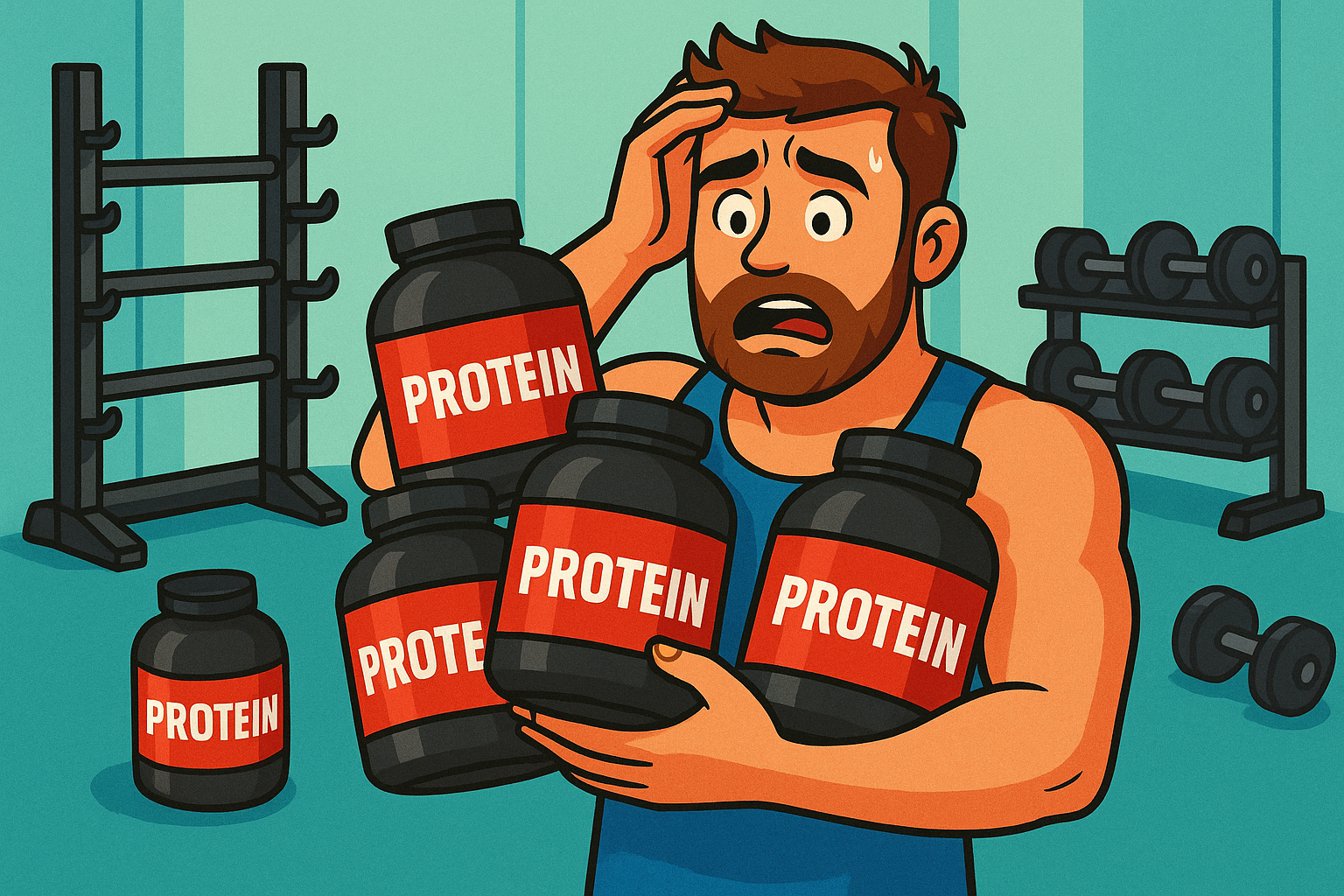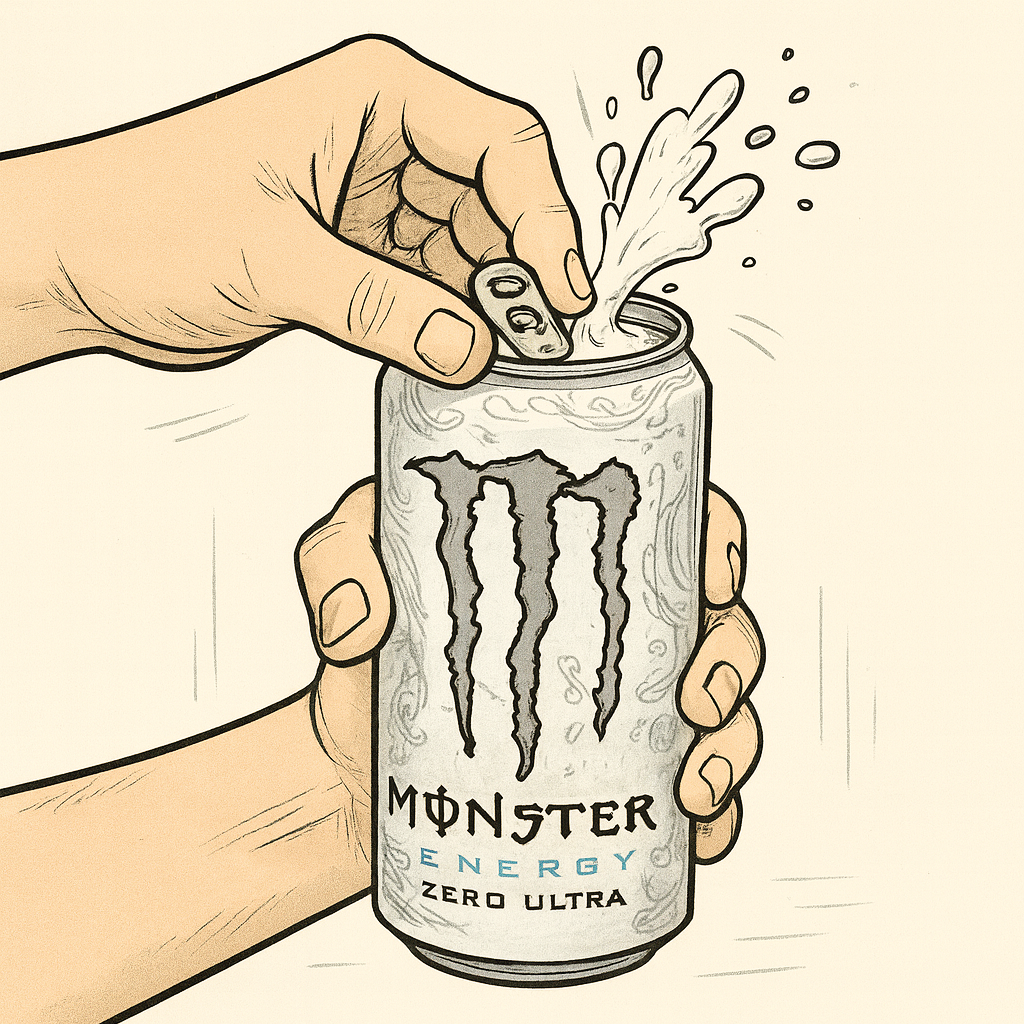
Is There *Really* a Protein-Synthesis Limit?
We savage the long-standing bro-science claim that more than ~30 g of protein in a single sitting is 'wasted' and show why meal-prep Tupperware might be the real scam.
Is There Really a Protein-Synthesis Limit?
Cue the classic locker-room advice:
"Bruh, your body can only absorb 30 g of protein at once—anything more is just expensive pee!"
That line has survived more gym generations than the leg-day dodge, but does the science back it up? Let's break down why your muscles aren't capped like a 2004 cell-phone data plan.
Myth #1 – "The 30-Gram Ceiling"
A 2018 review did point out that ~20-25 g of high-quality protein maximised muscle protein synthesis (MPS) in young adults and suggested the surplus might be oxidised for energy.
Sounds convincing—until someone actually tested bigger servings.
2023 dose-response research fed lifters a Hulk-sized 100 g whey shake and saw even higher and longer anabolic responses than 25 g. No spike in amino-acid wastage, either. Translation: your body didn't send the leftovers straight to the sewer.
Older adults? Same story: 70 g beat 35 g for net protein balance—so Granny can crush the steak, too.
Bottom line: Bigger boluses can still build muscle. The "wasted after 30 g" meme is as dead as your old Myspace profile.
Myth #2 – "Eat Every 2–3 Hours or Catabolism Will Find You"
A 2024 trial stuffed resistance-trained guys with 2 g/kg/day of protein either spread out or bunched together around workouts. Surprise: identical gains in size and strength. Total protein trumped timing.
Meta-analyses on protein-timing echo the same yawn-worthy verdict: once daily intake is adequate, meal frequency barely moves the hypertrophy needle. Your shaker-bottle alarm can chill.
How MPS Actually Works
- Leucine "Trigger": Yes, leucine flips the mTOR switch, but the idea that a strict 2–3 g leucine "threshold" hard-caps MPS is shaky—half the controlled trials back it, half don't.
- Synthetic vs. Whole-Body Balance: Even when MPS plateaus, extra amino acids can still suppress protein breakdown, pushing net balance positive. That's why bigger meals keep showing net anabolic gains.
- Storage ≠ Straight Flush: Excess amino acids aren't insta-urine; they circulate, hit other tissues, or get re-used later. Your kidneys are bored, not overworked.
Practical Takeaways
- Daily target first: 1.6–2.2 g protein/kg body-weight is the sweet spot for most lifters.
- Meals: 3–4 protein-centric feedings are plenty. One of them can be "the big-boy serving" if that suits your schedule.
- Training days: A post-workout hit is convenient but not magic.
- Older lifters: Aim for the high end of that range (anabolic resistance is real but conquerable).
- Intermittent fasting fans: Have at it—just budget enough protein during your eating window.
FAQ
| Question | Answer |
|---|---|
| Will huge protein meals make me fat? | Only if you also overshoot calories—protein still has calories. |
| Kidneys?? | Healthy kidneys laugh at 2 g/kg day. If you have renal issues, follow your doc, not an internet meme. |
| Do shakes count or must it be solid food? | Your muscles can't read; they only see amino acids. |
Source? I made it up
- Trommelen et al. 2023 – 100 g beats 25 g for >12 h MPS boost
- Schoenfeld & Aragon 2018 – Origins of the 20–25 g "cap" myth
- Park et al. 2020 – 70 g > 35 g in older adults
- Lak et al. 2024 – Meal-timing irrelevance in high-protein diets
- Witard et al. 2021 – Leucine-trigger hypothesis: 50/50 split verdict
Eat enough protein, lift heavy things, sleep like it's your job—and stop timing your life by Tupperware.
Ready to retire that six-meal a day spreadsheet? Good. Now hit the gym and let science (not superstition) fuel the gains.

